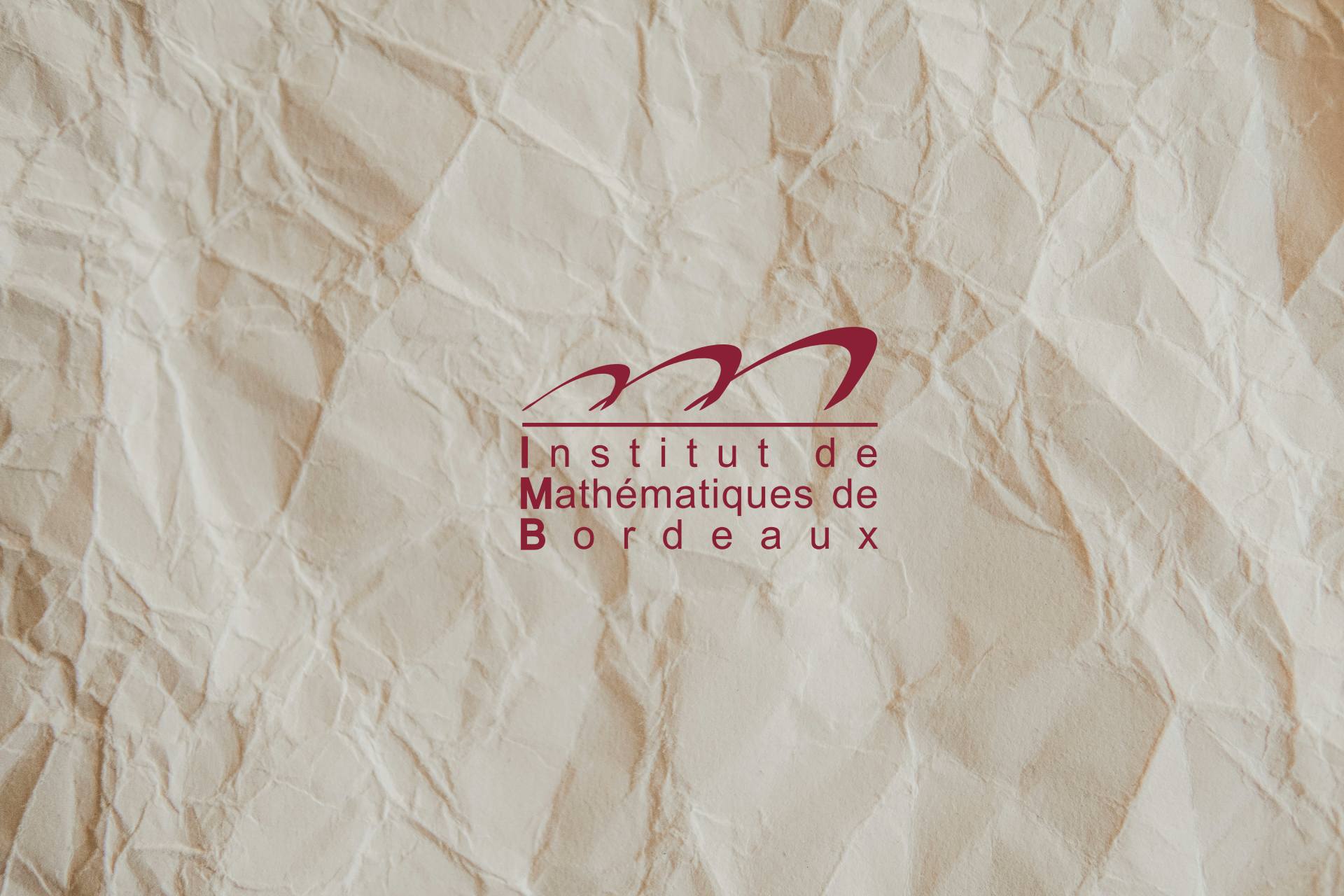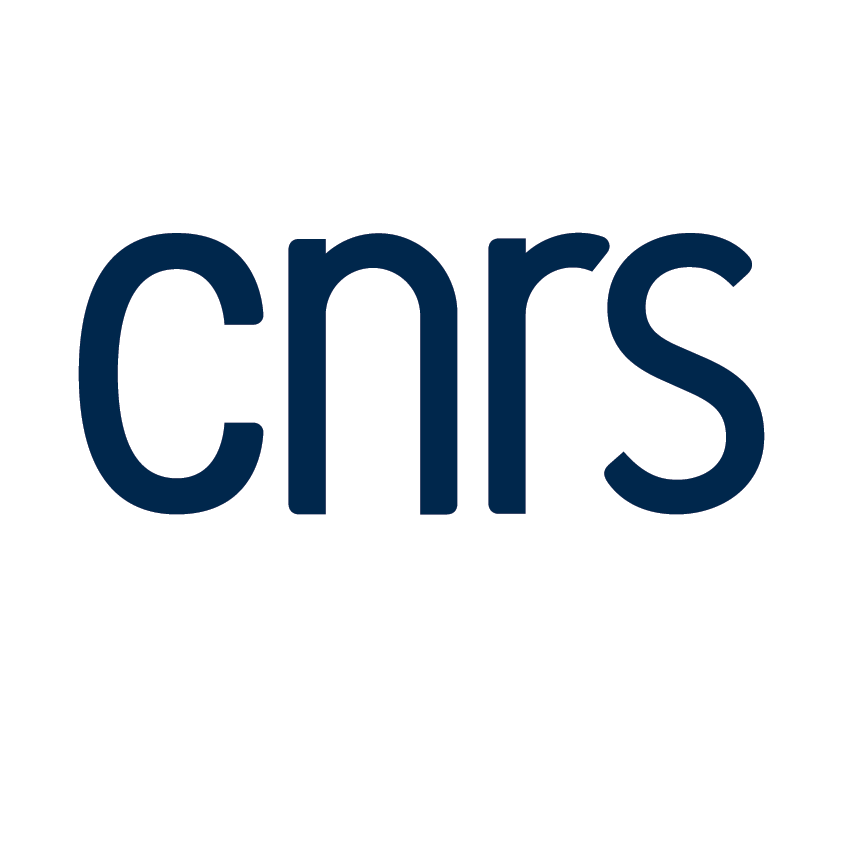Dernières actualités de l'IMB

02 avril 2025
Concours Ecole Doctorale Mathématiques et Informatique
Vous trouverez ici la liste des propositions de sujet de doctorat au sein de l’EDMI pour 2025.
NB : Les candidatures au concours « blanc » de l’école doctorale sont à déposer avant le 5 mai 2025, plus d'informations sur cette page.
12 février 2025
Création de l’« International Research Project PICASSO » (France, Espagne, Portugal) à l’institut de mathématiques de Bordeaux (IMB)
En savoir plusAgenda de l'IMB
Géométrie
Guillaume Tahar : Fibration isorésiduelle et arrangements de résonance
Guillaume Tahar
Fibration isorésiduelle et arrangements de résonance
04/04/25 09:30
Salle 2
Géométrie
Adrien Dubouloz : Autour des espaces affines exotiques : topologie, géométrie, algèbre et homotopie motivique
Adrien Dubouloz
Autour des espaces affines exotiques : topologie, géométrie, algèbre et homotopie motivique
04/04/25 11:00
Salle 2
Séminaire de Théorie des Nombres
Fabien Pazuki : Inégalité du parallélogramme pour les variétés abéliennes et applications
Fabien Pazuki
Inégalité du parallélogramme pour les variétés abéliennes et applications
04/04/25 14:00
Salle de conférences
Groupe de Travail Analyse
Grzegorz Swiderski : Introduction to spectral analysis of Jacobi matrices and orthogonal polynomials
Grzegorz Swiderski
Introduction to spectral analysis of Jacobi matrices and orthogonal polynomials
07/04/25 14:00
Salle de conférences
Séminaire Optimisation Mathématique Modèle Aléatoire et Statistique
Yasmine Beck : A Brief Introduction to Bilevel Optimization and Uncertainty: Key Concepts and Some Recent Algorithmic Advances
Yasmine Beck
A Brief Introduction to Bilevel Optimization and Uncertainty: Key Concepts and Some Recent Algorithmic Advances
08/04/25 11:00
Salle 285, IMB
EDP
Setsuro Fujiie : Microlocal scattering matrix for a coupled Schroedinger operator and application to the semiclassical resonances
Setsuro Fujiie
Microlocal scattering matrix for a coupled Schroedinger operator and application to the semiclassical resonances
08/04/25 11:00
Salle de Conférences
Annonces de postes
Le laboratoire
DIRECTEUR : Vincent Koziarz
L’Institut de Mathématiques de Bordeaux (IMB) est une unité mixte de recherche (UMR 5251) CNRS - Université de Bordeaux - Bordeaux INP.
Laboratoire d’accueil de l’École Doctorale de Mathématiques et Informatique, l’IMB regroupe l’essentiel de la recherche en mathématiques du site bordelais.
L’Institut de Mathématique de Bordeaux est implanté sur trois sites : dans le bâtiment A33 du campus de Talence de l’Université de Bordeaux, dans le Centre Inria de l’Université de Bordeaux et dans les locaux de l’IHU Liryc sur le site de l’hôpital Xavier Arnozan (Pessac).
L’IMB participe au Laboratoire Transfrontalier de Coopération TransMath avec le Basque Center for Applied Mathematics, l’Université du Pays Basque et Tecnalia. L’IMB est également impliqué dans le réseau international de recherche France-Corée du Sud (FKmathIRN).
Pour leurs enseignements, les membres de l’IMB sont affectés aux structures associées :
Le Laboratoire en quelques chiffres
Équipes de recherche
Analyse
Responsable : Marius Tucsnak
Calcul Scientifique et Modélisation
Responsable : Raphaël Loubère
EDP-Physique Mathématique
Responsable : Laurent Michel
Géométrie
Responsable : Laurent Bessières
Image Optimisation et Probabilités
Responsable : Bernard Bercu
Optimisation Mathématique Modèle Aléatoire et Statistique
Responsable : Boris Detienne
Théorie des Nombres
Responsable : Dajano Tossici
Équipes-Projets communes INRIA
L’IMB collabore avec le centre Inria de l’Université de Bordeaux au sein des équipes-projets communes suivantes :
ASTRAL
Méthodes avancées d’apprentissage statistique et de contrôle
CANARI
Analyse cryptographique et arithmétique
CARDAMOM
Certified Adaptive discRete moDels for robust simulAtions of CoMplex flOws with Moving fronts
CARMEN
Modélisation et calculs pour l’électrophysiologie cardiaque
EDGE
Formulations étendues et méthodes de décomposition pour des problèmes génériques d’optimisation
MEMPHIS
Modèles et méthodes pour les problèmes multiphysiques et interactions
MONC
Modélisation Mathématique pour l’Oncologie
Actions sociétales
Diffusion
L’Institut de Mathématiques de Bordeaux souhaite une grande ouverture sur la société. Il accorde beaucoup d’importance à la diffusion de toutes ses thématiques de recherche et aux échanges avec tous les publics.
Environnement
Le Groupe de Travail sur l’Environnement de l’IMB s’est formé en 2019. Il vise à réduire l’impact environnemental des activités du laboratoire (bâtiment, consommables, informatique, missions,…)
Responsable : Pierre Mounoud
Parité, diversité, équité
La mission parité vise à observer et identifier les situations dans la vie du laboratoire où la parité ne serait pas prise en compte, et à sensibiliser et communiquer sur cette question, à différents niveaux.





